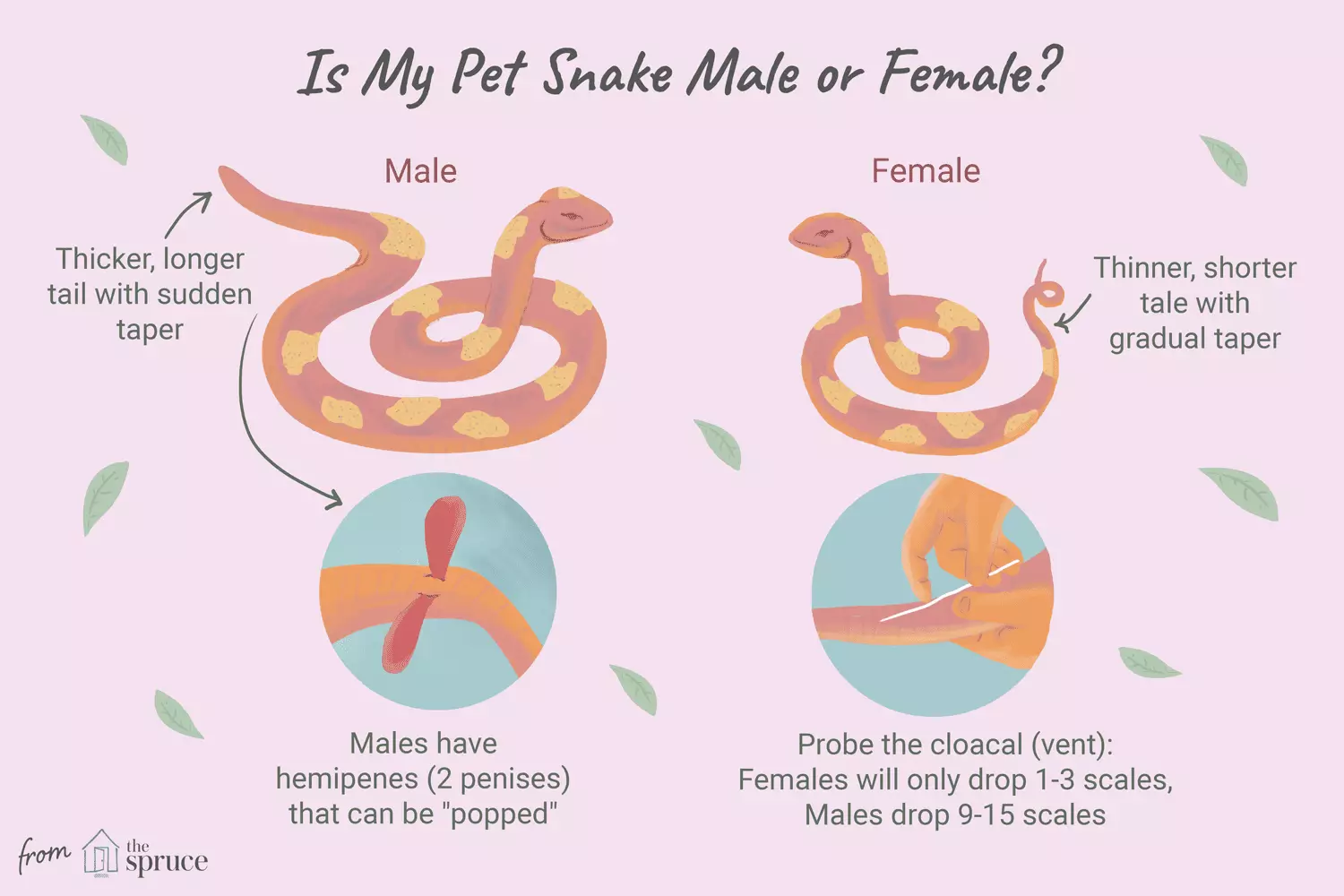When it comes to keeping snakes as pets, one of the most frequently asked questions by owners is how to determine the sex of their snake. This inquiry often stems from a blend of curiosity and practical necessity, whether it’s for breeding purposes or simply to understand more about their pet. However, unlike some other species, distinguishing between male and female snakes is not straightforward. In this article, we navigate the intricacies of snake sexing and highlight best practices for ensuring a safe and effective process.
At first glance, male and female snakes almost appear identical. Their external features largely mirror one another, making it difficult for novice snake owners to ascertain which sex they are dealing with. Nevertheless, with attention to specific anatomical characteristics and through certain methodologies, caregivers can accurately determine a snake’s sex.
Importantly, the methods of sex identification necessitate an experienced hand. For beginners, it’s pivotal to seek guidance from seasoned reptile keepers or veterinary professionals. Attempting these procedures without adequate training can lead to severe injury or distress for the snake, highlighting a significant risk associated with misjudgments during the process.
A notable anatomical distinction between the sexes is the presence of hemipenes in male snakes. These dual reproductive organs, which resemble small, tubular structures, are generally housed within the male snake’s body, specifically near the tail. Female snakes, on the other hand, lack these organs altogether. This foundational difference is key to understanding the various methods of sexing snakes.
For instance, the shape and length of a snake’s tail can serve as preliminary indicators of gender. Male snakes typically possess a thicker and longer tail, which tends to taper abruptly, providing a stark contrast to the more uniformly thin and progressively tapering tail of a female snake. While this method can yield useful insights, it is considerably more reliable when a male and female snake are compared side by side. Thus, it often prompts snake owners to utilize alternative, more definite techniques for sex identification.
Among the most common practices for sexing snakes is a method called probing. This procedure involves the insertion of a specialized, slender metal rod, known as a probe, into the snake’s cloacal vent. The technique is predicated on the understanding that male snakes allow the probe to extend further due to the presence of hemipenes. In males, the probe may typically slide in nine to fifteen scales deep, whereas in females, the probe usually penetrates only one to three scales.
Given the technical nature of probing, it should only be conducted by an individual with the necessary knowledge and skills. This includes not only proficiency in the physical act of probing but also the requisite equipment, such as appropriately sized probes. Additionally, it is vital to ensure the snake is restrained adequately to prevent movement and potential injury.
Another method commonly referenced in snake sexing is known as “popping.” This technique involves gently applying pressure to the area below the vent to encourage the hemipenes to emerge. However, it is essential to approach this method cautiously, as improper execution can lead to significant trauma for the snake. Furthermore, this technique is generally limited to smaller snake species and may not yield conclusive results, as a failure to pop could mean the snake is female or simply that the attempt was unsuccessful.
Due to the inherent risks and complications of both probing and popping, it is crucial to weigh the benefits of these techniques against potential harm. If you lack experience and adequate guidance, it is always wise to err on the side of caution and seek professional assistance.
Given the risks involved in sexing snakes, particularly through probing and popping, it is essential for snake owners to consult with veterinarians or trained reptile experts when attempting to determine the sex of their snake. Veterinarians familiar with reptiles can provide not only insights but also ensure the health and well-being of your snake throughout the process.
While sexing snakes can be a challenging endeavor due to their anatomical similarities, it is possible with the right knowledge and techniques. Owners must prioritize the health and comfort of their pets by seeking experienced guidance when needed. Ultimately, understanding your snake’s sex can enhance your relationship with it, paving the way for more informed care and management in the long term.


Leave a Reply